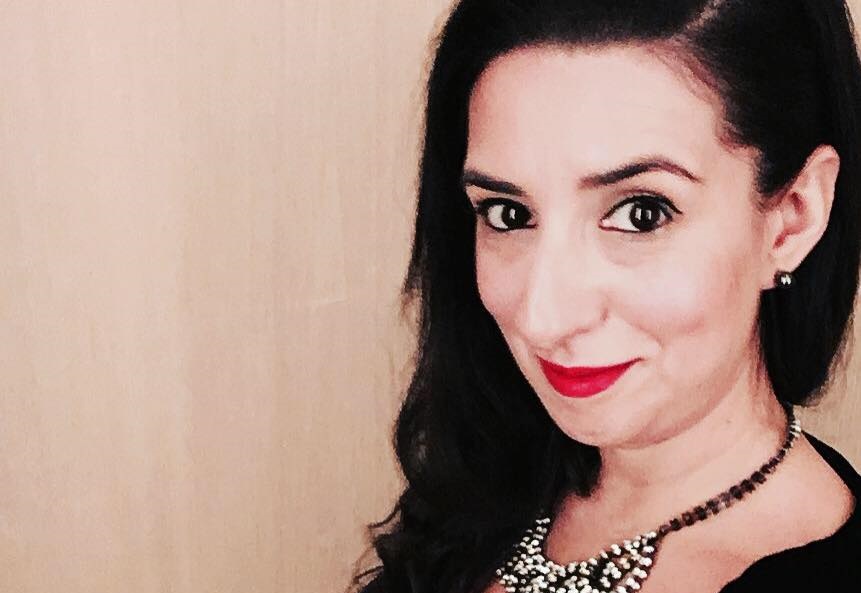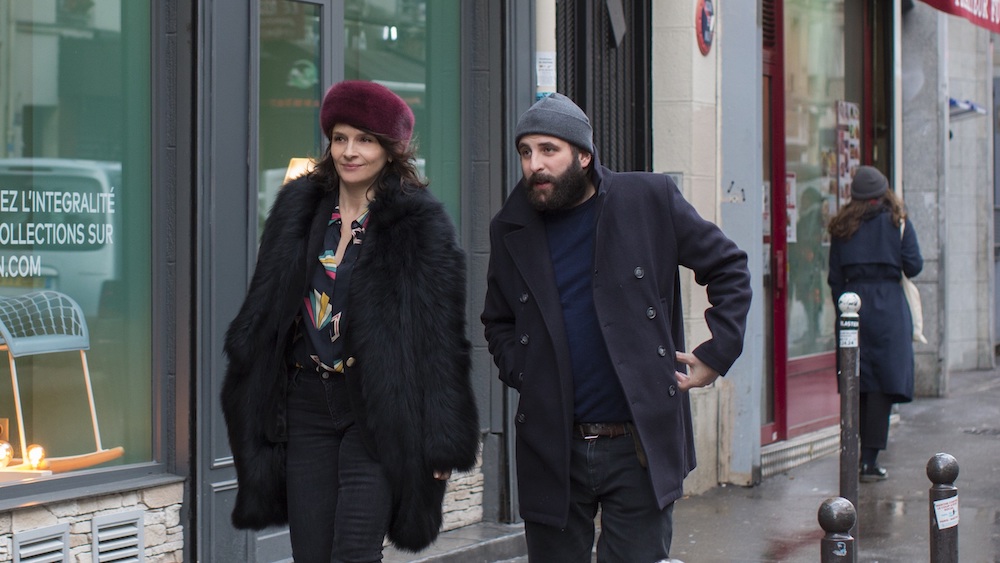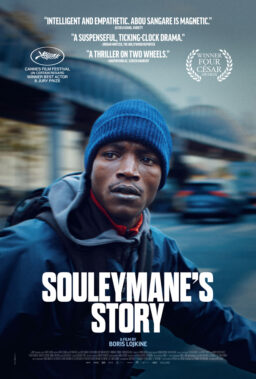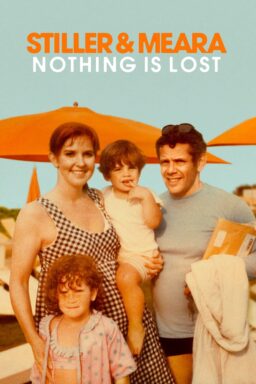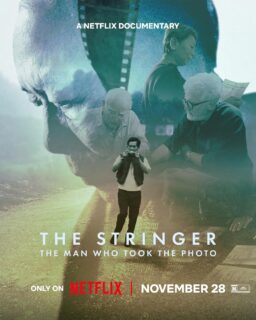Olivier Assayas doesn’t tweet. Not about the films he watched, not about politics, not about anything. In fact, he (enviably) isn’t on any social media channel. Forget what the bickering intellectuals of “Non-Fiction,” Assayas’ breezily sharp probe into a number of uniquely 21st century disputes, say about the medium. One character goes as far as associating the everyday humor of Twitter—an outcome of the brevity it exercises—with French witticism. But “It’s just not my world,” says Assayas, when I sat down with the writer/director last fall around the time “Non-Fiction” screened at the 2018 New York Film Festival. “There is this kind of 17th century culture of witticism in French culture. It’s kind of a joke, but it’s true,” continues the filmmaker. “So, why not update it to the electronic age or whatever. But ultimately, I just don’t have the patience. That’s the bottom line. I prefer to sit down and read. There are only so many hours in a day.”
Assayas might not put it to daily use on social media, but it is that witticism that informs “Non-Fiction” throughout. As brisk as conversational movies come, Assayas’ shrewd comedy is both about contemporary concerns and those that are as old as time, such as romantic relationships. Smart and bitingly hilarious, “Non-Fiction” follows a group of brainy French men and women from publishing, politics and entertainment, as they navigate their professional and love affairs in the digital age. Along the way, marriages that look functional on the surface reveal their fault-lines and characters indulge in various all-too-familiar buzz words like “post-truth” and “fake news.”
You will be forgiven to associate this film with the works of Woody Allen—an obvious comparison it might be for a story about well-informed urbanites, but it’s also inevitably apt. Adorned with a healthy doze of irony, “Non-Fiction” is pitched amid various dualities: online vs. offline worlds, marital infidelities and generational divides. In fact, the film’s French title, “Double vies” (Double Lives), is perfectly reflective of the ideas at the center of the film. “I wrote this movie as ‘eBook.’ No one liked the title, because they thought it was too technical. It didn’t connect,” says Assayas. “I had to dig a little further, as ‘Non-Fiction’ doesn’t work in French. Now I’m kind of lost, because when I think about the film, I don’t know if I think about ‘eBook,’ ‘Non-Fiction’ or ‘Double Lives.’ But I will adapt.”
Below is an edited version of our conversion about the themes of the film, working with Juliette Binoche and the dialogue between the past and present; a recurring topic of Assayas’ cinema of late.
You are both a filmmaker and a critic/writer. So, the theme of the movie, this shift from a physical landscape to the digital world, affected both of your crafts. How do you see that change inform the way we engage with film writing and criticism these days?
The thing is that movie magazines have stayed on paper, more or less. At least in France, the more recognized ones like Cahiers du Cinéma, Positif…they’re still around. You also have new magazines with new writers. There is a movie press in France. For some reason, it has stuck.
And I do like to write about film once in a while. My recent pieces have been published in Film Comment. I wrote an homage to Wong Kar-wai, because they were giving him a prize in Lyon, France at the Lumière Festival. Then, I also wrote a piece about [Ingmar] Bergman’s 100th Anniversary. Writing essays about film has kind of stayed with me. I’ve been publishing stuff [mostly in] print. And then you have websites; they cohabit. There’s no contradiction. But I don’t read much stuff online. I mean, I read dailies. I read the New York Times, but I don’t read movie magazines online much. It’s because I’m used to paper, I suppose. To me, what is problematic in terms of how the Internet has changed film criticism is, now people walk out of the theater and they tweet. They want to be the first. They want to be the first to publish a piece. And it speeds the process too much. I think that’s wrong.
As far as I’m concerned, I need a couple of days to be exactly sure of what I think of the film. Not in terms of good or bad, but in terms of how it echoes with my own emotions. Sometimes, something that superficially would seem to work for me maybe fades after two days and it is not that interesting [anymore]. Or the opposite: something I resent, something that I feel disturbed by, I realize I kept thinking about it after a couple of days. What I am saying is, if you’re talking about the process of writing about movies as some sort of art form, if you want to be in touch with your own emotions and your writing, you need a little time as opposed to be the first one to tweet when the credits are still rolling or something.

In your cinema, especially in your later work, you seem to dig up and examine the dialogue between the past and present: whether it might be texting with a ghost or whether it’s clash between generations, ideologies or technologies … You seem to be looking into how things evolve or fade and what change brings along.
[Non-Fiction] is very much about the process of change. In certain ways, it’s more about that than anything else, ultimately. But when I am making a movie like “Clouds of Sils Maria,” it’s very much about how actors have to adapt to a completely different media culture, which has been absolutely turned upside down by the Internet. Or when I make a movie like “Personal Shopper,” it’s about how our connection with the fantasy world of the Internet makes us different persons, changes our values, and changes our metaphysics. In a certain sense, those movies are not about questioning the process of change, but they are about the actual effects of change in our lives, in our individuality, in our relationship to knowledge, to our world view. A character like Alain in the film, he’s not a victim of change. He is one of the agents of change and he’s weighing the pros and cons.
You brought up “Clouds of Sils Maria” and an actress’ adaptation to change. There is maybe a little kinship between Juliette Binoche’s characters there versus here.
Yeah.

How does she react to that, plugging herself into a role that has some trace of herself as an aging actress?
What was fun for her and for me when we were making “Clouds of Sils Maria” is that in most movies, you try to erase the actor. What I am saying is, you try to erase the image people have of that actor because you want them to be interested in that specific character. And with her own backstory, and so on and so forth, you try to make her certainly one dimensional in that respect. I think that “Clouds of Sils Maria” worked on the idea that you constantly had the two layers. You simultaneously had Juliette. I was constantly using what the audience assumed or imagined of Juliette and the discrepancy or the identification with the fictional character she’s playing. It constantly works on two levels.
Same thing with Kristen [Stewart]. I think that part of the comedy in “Clouds of Sils Maria” is that you constantly know who Kristen is and her specific position in the film is so different. It gives such an oblique angle on what you imagine she is. And I think we had fun with that. And Juliette had a lot of fun with that, by being this actress she could have been but she is not exactly. Of course, when I was writing “Non-Fiction,” it was kind of a continuation. I just wanted to, because I had so much fun with Juliette on this kind of comedy level and I wanted to use that in this new film.
“Non-Fiction” is a particularly dialogue-driven movie. Did you start on a larger story level, or with conversations and anecdotes in your head?
Honestly, I had neither. I had no idea where this movie was heading, eventually to the wall or something. But, it kind of happened in the process of writing. It was like an analog picture you put in the bath [during photo development] where you put the images. You have a blank image and all of a sudden the picture comes out. So, I kind of understood what I was doing in the process of doing it. It was like the dialogue was generating the fiction. I was writing a scene and the scene took some kind of weird turn and I kind of liked the weird turn and it influenced the next scene. Until very late in the process, I was not sure if I had a movie. The thing is that, because I’ve been writing this for fun, I thought that maybe this would stay in my drawer or become a play. Then I realized there’s a story. Eventually, it’s a comedy of manners.
I was not aware of that initially, but the audience was part of the film. The sense that you are a witness to the conversations that you’re familiar with means you could be a part of the conversation. Actually, you want to be a part it. You switch allegiances. You say, “he is right, he has a point.” But during the next scene, you’re, “no, no, I don’t agree with him.” So, it kind of forces you to think about your own relationship to that stuff. I don’t think it’s serious—I don’t think anybody will change opinions or that the film will expand their knowledge of the issues. But it’s a game and we are a part of the game.

That’s true. As I was watching it, I often thought I’ve had versions of the same conversations.
Yeah, I know, I know. I finished the film in May or June. I didn’t screen it in Paris, so there were three months this summer where no one had seen the film and it was done. I found myself having conversations with people who would tell me basically, more or less, one thing that one of the characters was saying in the film. I felt so weird because I had to answer with something that’s already in the film.
How do you work with your actors when it’s a heavily dialogue-driven movie like this, one that has a specific rhythm?
The energy has to be in the acting. Sometimes, the energy is in the way you shoot. Sometimes, the director, who just injects the energy, it has to be in the dialogue. They have to be something very forceful in the way, something very tense. And that pretty much depends on the actors. In this film, I’ve been very lucky, because I had all the actors that were my first choices. I knew I wanted them and I liked the interaction between them in the sense that they come from completely different worlds, which adds some tension. Like Guillaume Canet, who plays Alain, and Vincent Macaigne, who plays Leonard. They are not supposed to be in the same film. They come from completely different backgrounds, as different as it gets. One is very established; he’s a leading man and a very famous director in his own right. Whereas Vincent Macaigne is just a crazy stage director, who does these wild shows. He’s very successful. He’s just like way over the top. He’s really one of the most exciting stage directors in France today. But two completely different worlds.
I think that tension generates something, generates the energy. Nora Hamzawi is mostly a stand-up comic; she had never really been in a movie. She never really had serious spot in a film. But, she brings her own world to the film and her own energy. Again, when you have good actors, who have imagination and their own inner world, it challenges the other actors. There is something mutually beneficial in their interaction.
It’s interesting that we were watching this digital vs. film debate happening in the movie, which you shot on 16mm. I thought maybe you were supporting one side of the debate here.
In terms of technology, I do my own cherry picking. The thing is that I just don’t like the texture of digital filmmaking. I’m totally open to technology. I’ve been using Avid editing ever since it existed. I’ve been doing digital code timing of my films. I’m just amazed by the new tools that technology has brought to cinema. It’s just that I prefer the texture of film stock, 35mm or 16mm. This film was shot on Super 16, ’cause I wanted to go back to the kind of likeness of movement that I had in the movies I was doing in the ‘90s. We were doing on Super 16. And the ending is 35.

An observation, admittedly made by my half-French husband: it was interesting to not have the more traditional sit-down French dinner parties in this film, the more formal settings with wine. Instead, you went with the looseness of buffet dinners.
Absolutely.
And people are consuming more beer and whiskey than wine. It seemed more globalized.
He is culturally extremely right. Totally correct. On a much more basic level, because the film was so much about dialogues, it has to be some kind of dinner party because otherwise six people don’t sit down and talk. I’ve done too many dinner scenes with people sitting. The two long dinner party scenes are like big set pieces; they are long. So, if I want to bring some kind of fluidity, some kind of energy, I needed to have characters that were able to move around. Hence the buffet thing. But yes, in some sense, the culture has changed.
“Non-Fiction” made me think a lot about the disappearance of physical media. On a basic level, a lot of films are being digitally released these days. Sometimes they don’t get a DVD or Blu-ray release.
For preservation, most movies, meaning most movies of a certain budget, have film stock preservation print because it’s the only format we know will not move. There has been over a century of cinema and we know that print stays. All the movies, every single movie, like the “Avengers” movies, have a 35mm print. Obviously, I always made a point for all my films, for preservation reasons, to have a final 35 color-timed print. But it’s expensive. Studios do it. Bigger films do it. The problem is the smaller independent films. They don’t have preservation prints because they can’t afford them. I genuinely think it’s an issue because that domain of filmmaking is in danger. You don’t what will happen, how the digital format will age.
Another additional side of that is the way we consume film and media. And no one has the answers in the streaming vs. theatrical debate. French film culture is different, but in the US, there is an evident and rapid shift to streaming, giving people less incentive to go to a theater.
Yes, yes, it’s true. And I experiment, but one thing I’m 100% convinced of is that, it’s way, way better to watch movies in theaters. I just don’t have a second of doubt about that. Even if I do, myself, watch a lot of movies on my home video, mostly because I vote for the Academy Awards. And I’ve been voting for the last three or four years. So, they send me screeners. So, it’s movies that are not available yet. They have not opened yet. I get the screeners for a lot of movies that I’m so curious to see, so I do watch them on my home video and I feel angry with myself. It’s frustrating because it’s movies that I want to see or that I would prefer to watch on a big screen, absolutely. It’s just that they are not available yet. Because I’m impatient, I’m curious. And also, if I want to vote, which is not a vital issue, but if I want to vote, I need to see them before they are actually released in France. It’s a bit frustrating a process. But based on my absolute conviction that you genuinely watch a film when you watch it on a theater screen. There is this kind of feeling of collective concentration. It’s all about the concentration.
